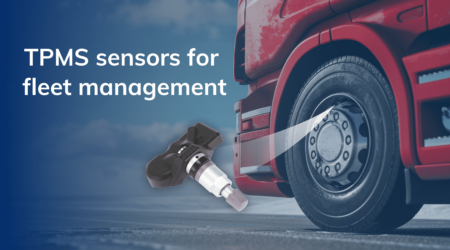What Are Tilt Sensors: A Beginners Guide

Tilt sensors are crucial in many industries, from construction sites to transportation fleets. They measure angles and inclinations, helping maintain stability in different situations. In this blog, we’ll explore what these sensors are, how they work, and why they are essential in today’s technology-driven world.
What Are Tilt Sensors?
Tilt sensors, also called inclinometers, measure the angle of tilt or inclination in relation to the Earth’s gravitational pull. They are commonly used to monitor the angle of an object, providing data crucial for maintaining stability and safety. These sensors come in various types, including mechanical, electrolytic, and MEMS (Micro-Electro-Mechanical Systems) sensors. Moreover, each of those functions in unique ways and offers benefits depending on the application.
Tilt Sensors Types and their working
Tilt sensors work based on different principles, depending on their type:
- Mechanical Tilt Sensors: These are the simplest form of tilt sensors. They consist of a pendulum or ball that moves within a fluid or cavity. As the sensor tilts, the movement of the pendulum or ball shows the angle of inclination. The position is detected through electrical contacts, giving a direct reading of the tilt angle.
- Electrolytic Tilt Sensors: These sensors use a conductive liquid and electrodes to measure tilt. When the sensor tilts, the liquid inside shifts, altering the electrical resistance between the electrodes. This change is then converted into an electrical signal that shows the angle of tilt.
- MEMS Tilt Sensors: MEMS sensors are among the most advanced and commonly used types of tilt sensors. They use tiny micro-machined parts to measure tilt. A typical MEMS sensor has a small mass suspended by springs. As the sensor tilts, the mass moves, causing a change in capacitance or resistance, which is then measured and converted into a tilt angle.
Applications of Tilt Sensors
Many industries actively use these sensors in a wide range of applications. Here are some key examples:
- Construction and Heavy Machinery: In construction, these sensors are used to monitor the angle of cranes, bulldozers, and other heavy equipment. This helps prevent accidents and ensures that the machinery operates within safe limits.
- Transportation and Fleet Management: The sensors are essential in fleet management, especially for vehicles like trucks and buses. They help monitor the tilt of the vehicle, ensuring safe loading and unloading and preventing rollovers.
- Industrial Automation: In manufacturing and automation, the sensors are used to monitor the position of robotic arms and other equipment, ensuring precise movements and reducing the risk of damage.
- Consumer Electronics: These sensors are also found in everyday devices like smartphones and gaming controllers. They help detect the orientation of the device, enabling features like screen rotation and motion control.
 Benefits of Using Tilt Sensors
Benefits of Using Tilt Sensors
- Safety: One of the main benefits of using these sensors is enhancing safety. By providing real-time data on the angle of inclination, these sensors help prevent accidents and equipment failures.
- Efficiency: These sensors improve operational efficiency by allowing precise control over equipment and machinery. This is especially important in industries where precision is critical, such as construction and manufacturing.
- Cost Savings: By preventing accidents and equipment damage, sensors help reduce maintenance and repair costs, leading to significant cost savings over time.
- Versatility: These sensors are versatile and can be used in various applications, from industrial machinery to consumer electronics. This makes them a valuable tool for many industries.
Conclusion
Tilt sensors are an important part of many industries, providing accurate and reliable data on the angle of inclination. Their ability to enhance safety, improve efficiency, and reduce costs makes them valuable in today’s technology-driven world. Whether you’re in construction, transportation, or any other industry, understanding how these sensors work and their benefits can help you make informed decisions about using them in your operations.
By investing in quality sensors, you can ensure the smooth and safe operation of your equipment. Additionally, contributing to the success and growth of your business.




